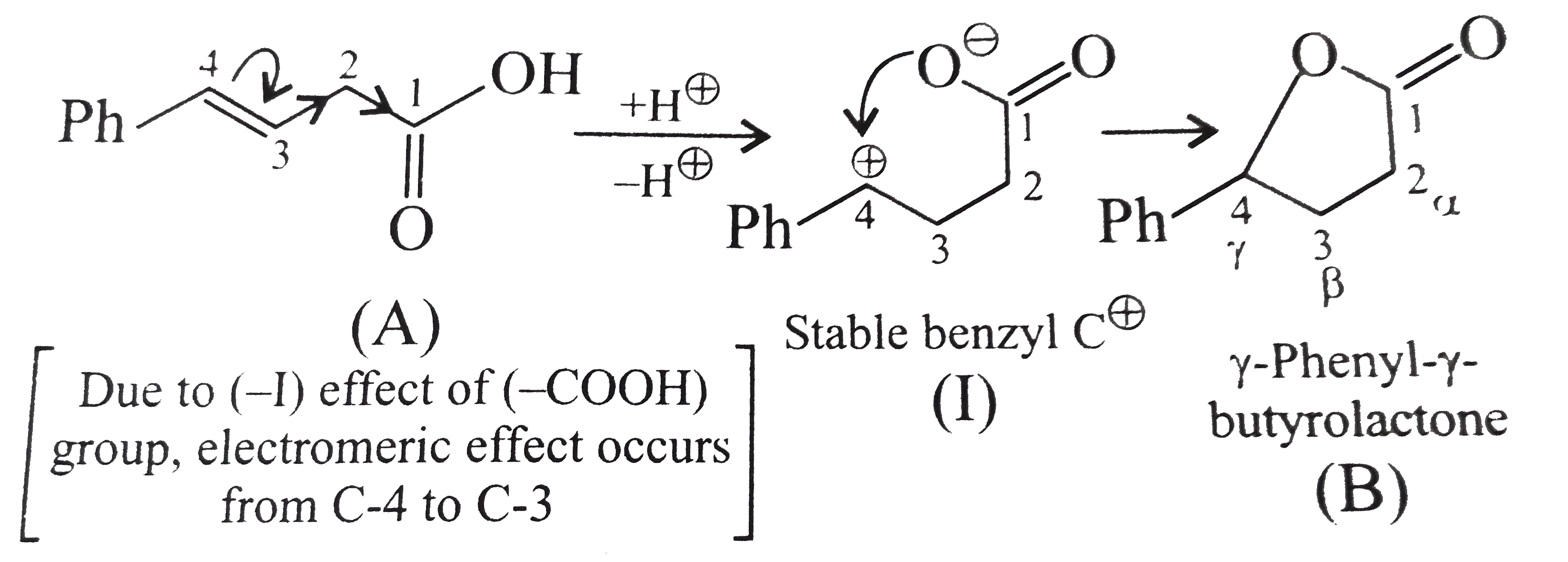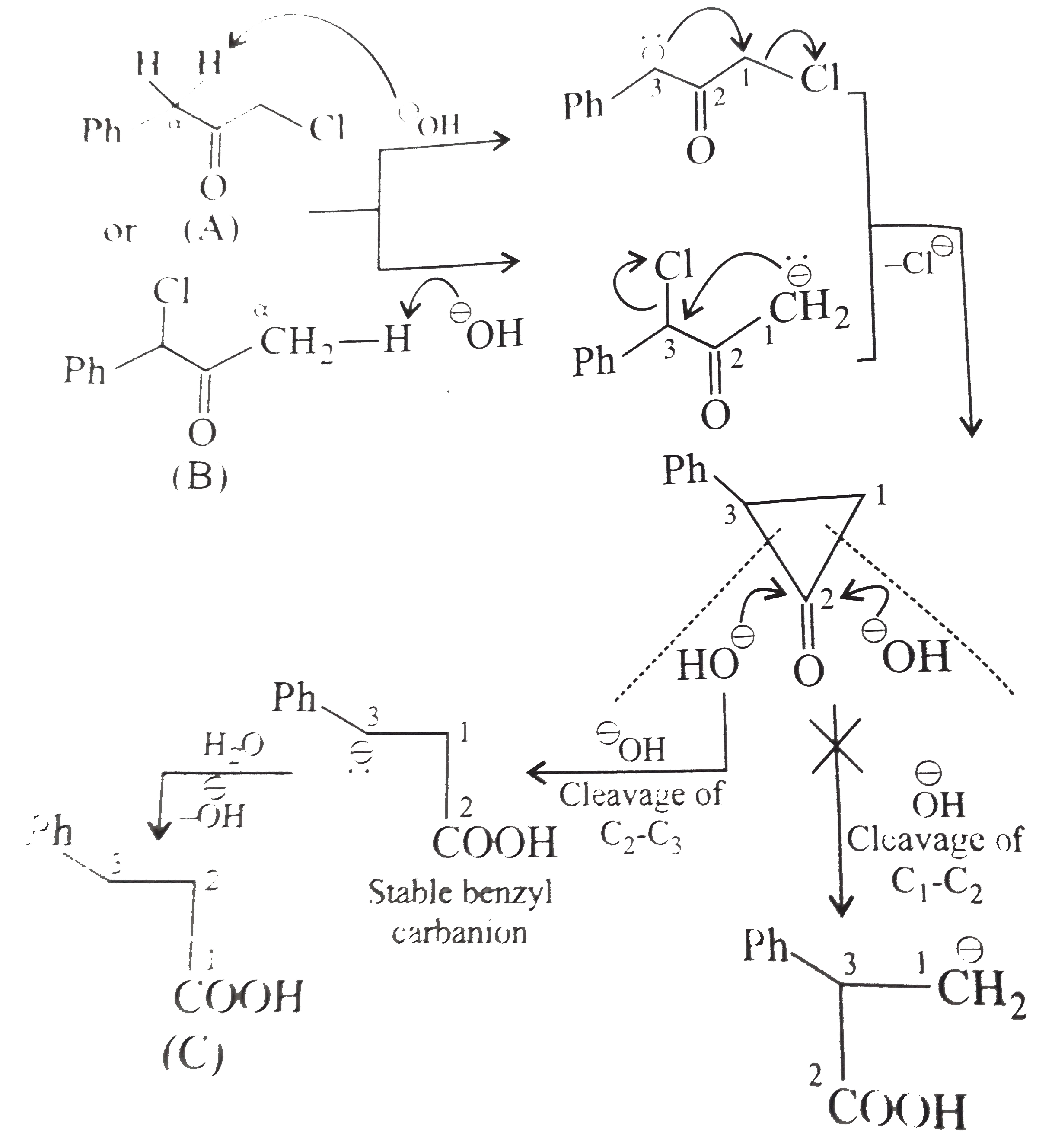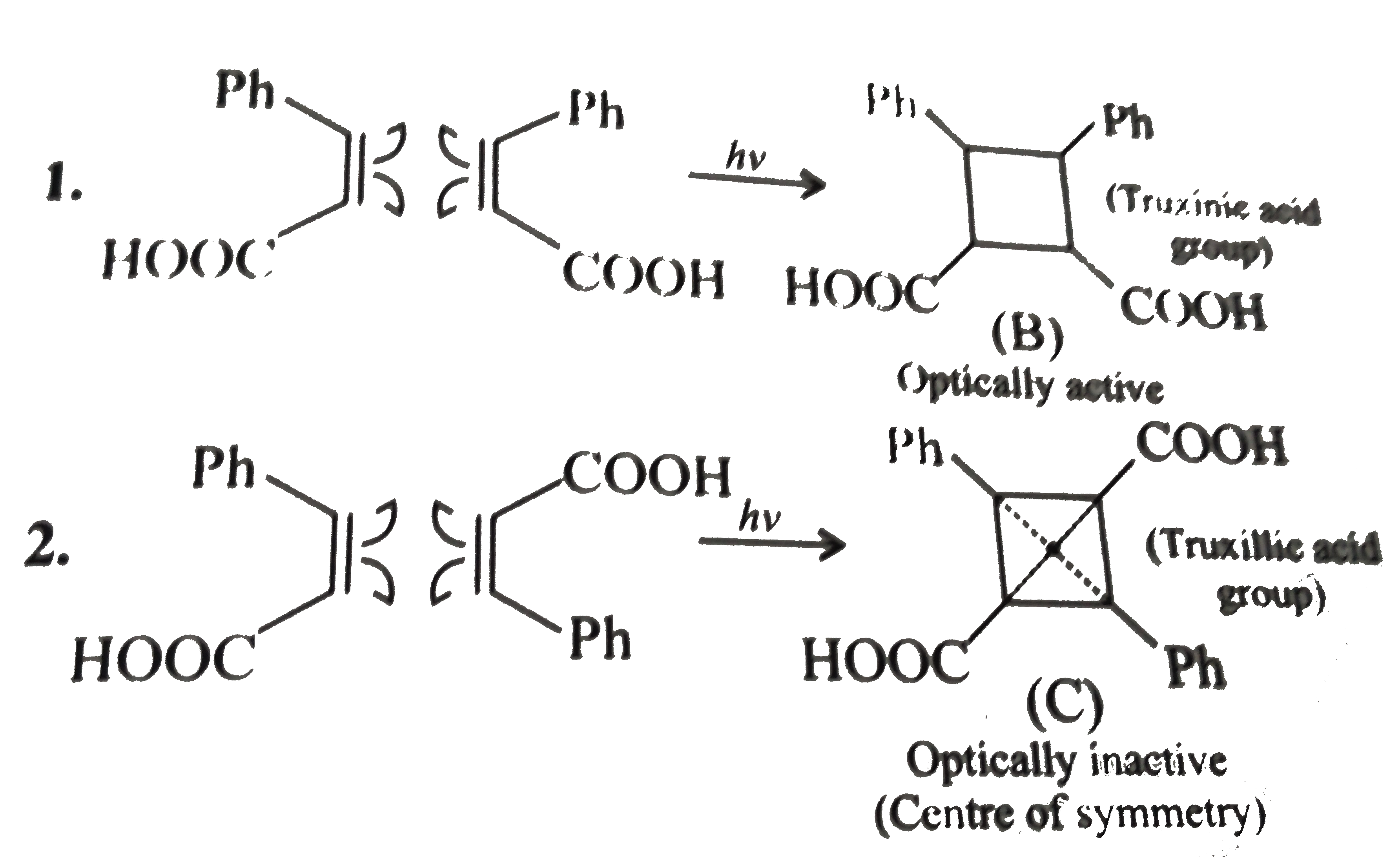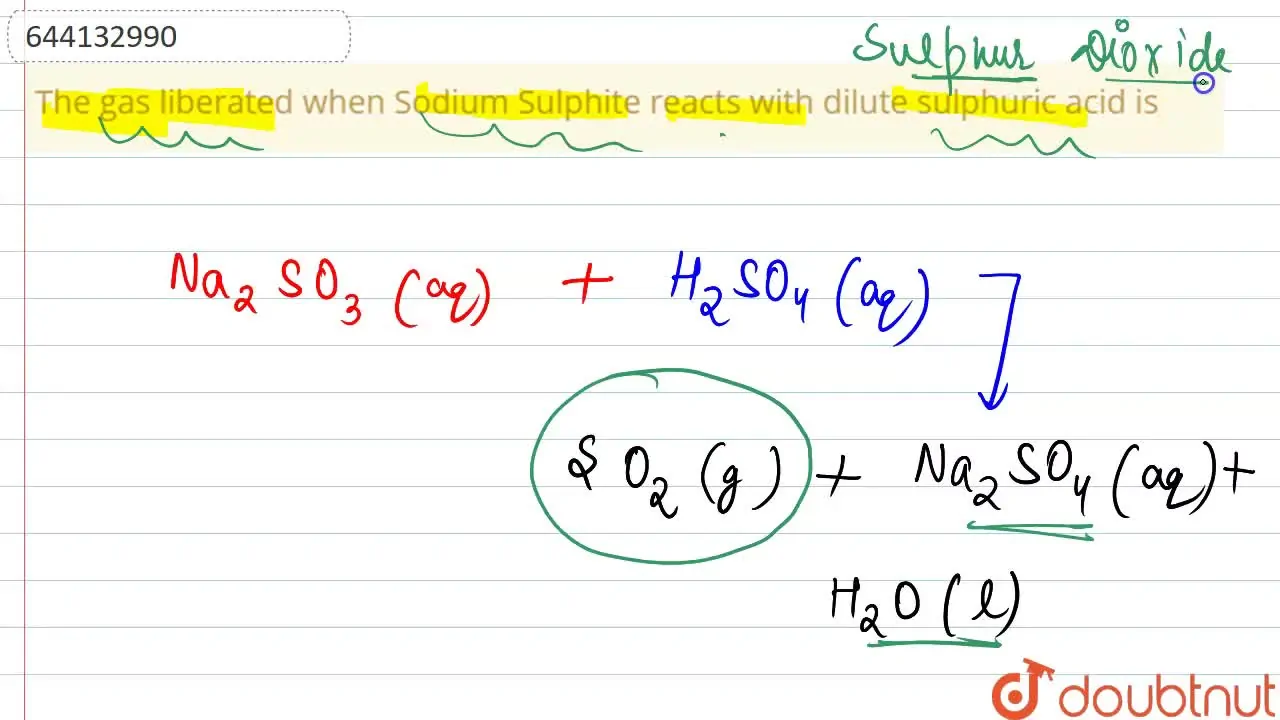The gas liberated when Sodium Sulphite reacts with dilute sulphuric acid is
(a) 
(b) 
Hydroxy acid forms a more stable five-membered cyclic lactone.
( c) is an anhydride which undergoes nucleophilic acyl substitution with amine. Necleophilic attack by amine occurs perferentially at the less-hindered atom of the formyl group. The leaving group is ion.

(d) This problem is similar to problem above. Here nuceophilic attack by amide takes place at the more-hindered side, since is a better leaving group than ion.
 ( e) Here, a -lactone is formed, although lactone is never formed from hydroxy acid. The formation of -lactone in this case is due to the stabilisation of a carbocation through neighbouring group participation of group.
( e) Here, a -lactone is formed, although lactone is never formed from hydroxy acid. The formation of -lactone in this case is due to the stabilisation of a carbocation through neighbouring group participation of group.

(f) The protonation of bond in gives a stable benzyl carbocation which forms lactone through neighbouring group participation of group.

(f) The protonation of bond on gives a stable benzyl carbocation which forms lactone through neighbouring group participation of group.

(g) It is an example of Favorskii rearrangement reaction since both and are haloketones which on reaction with a base give esters or with give acid.
The formation of the same product by both and suggests that a common intermediate is formed.
Base abstracts acidic atom, following by an displacement of to give a cyclopropan. one ring. Ring opening occurs to give a more stable benzylic carbanion.

(h) It is also an example of Favorskii rearrangement reaction, since the compound is an -haloketone. Base abstracks acidic atom. followed by displacement of to give a bicyclo ketone. Ring opening. followed by acidification, gives cyclopentane carboxylic acid .

(i) The photochemical demerisation of cinnamic acid is cycloaddition reaction.
Related Playlists
- BOOK - CENGAGE CHEMISTRY ENGLISHCHAPTER - CARBOXYLIC ACIDS AND THEIR DERIVATIVESEXERCISE - Exercises (Subjective)19videos
CARBOXYLIC ACIDS AND THEIR DERIVATIVES
- BOOK - CENGAGE CHEMISTRY ENGLISHCHAPTER - CARBOXYLIC ACIDS AND THEIR DERIVATIVESEXERCISE - Exercises (Linked Comprehension)34videos
CARBOXYLIC ACIDS AND THEIR DERIVATIVES
- BOOK - CENGAGE CHEMISTRY ENGLISHCHAPTER - CARBOXYLIC ACIDS AND THEIR DERIVATIVESEXERCISE - Exercises Archives (Analytical And Descriptive)34videos
CARBOXYLIC ACIDS AND THEIR DERIVATIVES
- BOOK - CENGAGE CHEMISTRY ENGLISHCHAPTER - BIOMOLECULESEXERCISE - Exercises Archives (Analytical And Descriptive)8videos
BIOMOLECULES
- BOOK - CENGAGE CHEMISTRY ENGLISHCHAPTER - CHEMICAL KINETICSEXERCISE - Archives Subjective23videos
CHEMICAL KINETICS
Similar Questions
Sodium bicarbonate reacting with dil. sulphuric acid
View SolutionName the gas liberated when LiH reacts with water.
View SolutionWhen sodium peroxide is trated with the dilute sulphuric acid, we get.
View SolutionWhich gas is released when Potassium reacts with dilute hydrochloric acid?
View SolutionName the gas liberated when NaH reacts with water.
View SolutionDistinguish between: Sodium nitrate & sodium sulphite [using dilute sulphuric acid]
View SolutionDistinguish between the following pair of compounds using test given within brackets : Sodium nitrate and sodium sulphite (using dilute sulphuric acid)
View SolutionThe gas liberated when metals like copper reacts with cold and dilute nitric acid.
View SolutionDistinguish between the following pair of compounds using the test given within bracket :
Sodium nitrate and sodium sulphite (using dilute sulphuric acid).View SolutionIdentify the gas evolved when
Magnesium reacts with very dilute nitric acid.View Solution


